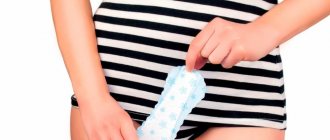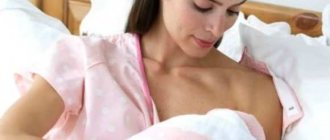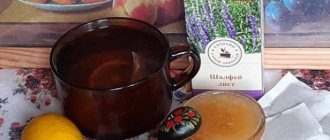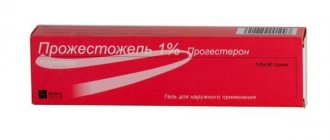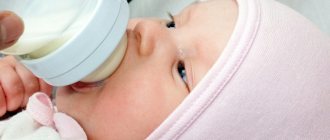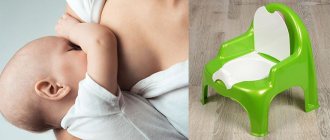Massage has always been considered an effective healing procedure. Regular sessions can improve blood flow to tissues, improve the functioning of internal organs and systems, eliminating signs of various diseases. Breast massage for lactostasis is another very effective procedure that helps to quickly and painlessly solve the problem. It will be useful for nursing mothers who are encountering signs of lactostasis for the first time to learn about how to properly massage their breasts, what are the rules for conducting sessions and the benefits of this treatment method.
What is lactostasis?
Stagnation of milk in the gland ducts in women is called lactostasis. The problem arises for a number of reasons, but it manifests itself in the same way for everyone - pain, a tingling and burning sensation in the chest, a deterioration in the outflow of milk. Women who are breastfeeding their first child are more likely to encounter signs of pathology, but it is possible that stagnation of milk will also occur in mothers who are breastfeeding their second or even third baby.
Attention! It is important to start taking measures to eliminate stagnation from the first days. After two or three days, the body begins to perceive the thick milk in the clogged ducts as a foreign body, which causes the temperature to rise and active inflammation begins.
What is prohibited to do
If mastitis is suspected, do not apply very hot or very cold compresses . This can cause suppuration faster and the body will not have time to cope with the microbes.
purulent discharge appears from the nipple, the baby should not be put to the breast . You need to see a doctor for antibiotic therapy. Milk is a breeding ground for pathogenic microorganisms and they can enter the baby’s stomach. Due to immature immunity, infection will occur.
You cannot reduce the amount of fluid you drink , as the milk becomes thicker and harder to pass through the ducts. It must be increased to soak the cork. This is especially true for women whose milk contains a lot of fat - this can be determined by the expressed liquid that has settled in the bottle. There will be a fatty layer on top.

Valeria
General doctor
Ask a Question
Don't delay your visit to the doctor. Delay can seriously harm your health in the future, because women who have experienced mastitis in their youth have a higher risk of developing breast cancer.
Symptoms and causes of milk stagnation in the breast
To get rid of the signs of lactostasis, you need to know about the causes of the pathology:
- lack of the correct feeding regimen, when the milk remains and the breasts do not empty on time, due to which the ducts become clogged;
- problems with the breasts - squeezing them with tight underwear, while sleeping on the stomach, hypothermia, injury;
- incomplete emptying of all lobes of the gland, when the baby does not grasp the nipple correctly, or the mother feeds him in the same position;
- excess milk volume - if the baby does not eat everything, it is worth expressing the excess (without zeal, so as not to provoke increased lactation);
- early transition to artificial formula feeding.
How to recognize lactostasis at the first signs and soften the lumps in the gland? At the beginning of the stagnant process, the nursing mother feels a nagging pain. They become weaker after the baby has suckled the breast, but later return. Then the skin on the affected gland becomes red, local swelling appears, and tubercles can be felt through the layer of tissue.
If measures are not taken at this stage, the temperature may rise - first in the areas of compaction, and then spread everywhere. Severe hyperthermia (37.2-37.5°C) indicates an active inflammatory process that must be urgently stopped to avoid mastitis.
What are the benefits of breast massage for lactostasis?

Massage for lactostasis can significantly improve the well-being of a nursing mother and has a number of advantages:
- Lightly massaging the glands helps to increase the volume of the hormone oxytocin produced - it controls the process of milk production;
- gentle movements of the fingers across the chest relax the muscle tissue of the chest, eliminating nagging pain;
- with the help of massage, you can effectively break up the lumps that form during lactostasis and improve the outflow of fluid, thereby providing the baby with a sufficient amount of milk;
- stroking and patting the skin of the breast improves blood flow to the tissues - swelling subsides, lactation increases;
- The pectoral muscle is strengthened and its tone increases.
On a note! Massage for milk stagnation during breastfeeding will help eliminate the first signs of lactostasis even without additional measures. As long as you can break the seals yourself, you will not need to apply compresses or take medications.
Types of breast massage for lactostasis and basic rules
Depending on whether a nursing woman has already developed lactostasis, two types of breast massage are suggested - therapeutic and preventive. As is clear from the names, the first type is intended to prevent stagnation of milk in the glands, the second is aimed at eliminating it if the ducts are already clogged. Experts recommend starting preventive sessions from the first days of feeding in order to maintain a full flow of milk.
Therapeutic massage for lactostasis in nursing mothers is carried out in compliance with certain rules:
- kneading the chest should be started from the first days after the symptoms of the problem are detected, otherwise untreated lactostasis will provoke the development of mastitis;
- before starting the treatment procedure, the breasts need to be prepared - doctors advise applying a warm heating pad, a towel or taking a shower to the glands;
- monitor the sensations during the session - the woman should not feel acute pain;
- repeat the procedures until the lumps in the breast completely resolve and the feeding process ceases to cause discomfort.
If the gland duct is blocked, the process of inflammation begins inside. During the first two days, every effort must be made to eliminate the stagnation, otherwise bacteria will begin to multiply in the area of the blockage. This development of events is fraught with the formation of mastitis, often of a purulent nature.
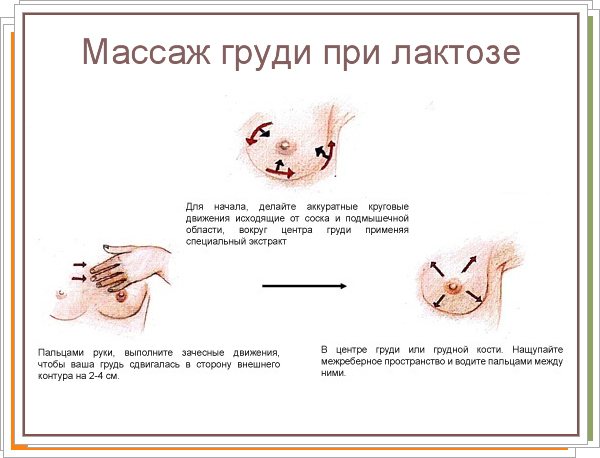
Preventive massage
First, you need to talk about how to properly knead your breasts to avoid the appearance of stagnation and lactostasis. Preventive measures will help not provoke swelling of the gland, maintain full lactation and good flow of milk through the ducts to the nipple. This massage should be done before putting the baby to the breast - this will make it softer, lumps will break up if they have already appeared, and it will be easier for the baby to latch on to the nipple.
Preventive sessions can be carried out independently at home, preferably while taking a shower:
- make movements in a circle from the edges of the chest to the middle, massaging the skin with light pressure with your fingers;
- after 2-3 repetitions, wash the glands with warm water and again repeat the massage movements in a circle.
The water temperature should be comfortable - not cool, but not scalding. The duration of the preventive massage session is 8-10 minutes, after which you need to lightly express the milk and feed the baby.
Therapeutic breast massage for lactostasis
How to do a massage to eliminate signs of lactostasis, if the lumps are clearly palpable, the woman experiences nagging pain in the chest, and the gland itself is hot and dense? Such symptoms require more serious measures than preventive sessions while taking a shower. You cannot perform a therapeutic massage with dry hands, much less allow your husband to act as a breast pump after the session. This can damage the delicate tissue of the nipples and cause infection to enter the gland.
Recommendation! If a woman does not know how to properly massage her breasts to get rid of lactostasis, or is afraid to do it herself, you can ask a specialist for help. A doctor or visiting nurse will come to your home, work on all lobes of the mammary gland, show you the correct technique and help you express the remaining milk.

Preparation
Before talking about the massage technique for lactostasis, you need to dwell on the rules of preparation for the session, this is no less important than the procedure itself. First of all, you need to thoroughly wash your hands and mammary glands. Ideally, you should take a warm shower to relax the muscles and improve the flow of milk through the ducts. The massage should begin immediately after applying the baby to the breast, or expressing (manually or using a breast pump).
The skin around the gland is lubricated with any oil that is in the house - olive or castor, simple vegetable oil is also suitable. The main thing is that the product does not get on the areola and nipple area. For the convenience of massage, it is better for a woman to sit in front of a mirror. If the stagnation is extensive, then the session is carried out not only after feeding, but also before it, and the breast is then rinsed with boiled water.
Technique
How to properly massage the breasts during lactostasis to achieve maximum effect? It must be remembered that strong pressure aggravates pain and swelling, so movements should be smooth and careful. If a woman feels pain during a massage, perhaps she does not follow the technique - in this case, it is worth consulting with a specialist. The rules of massage are simple:
- The gland is supported by the hand, while the second one works over the entire surface of the chest with stroking movements. They start from the base, including the bottom and armpit, and towards the nipple;
- after stroking, spiral movements are made along the gland, also from the base towards the center (3-4 times for each breast);
- circular movements clockwise;
- each breast is taken in hand, squeezed a little and worked in a circle;
- in the area of compaction, the skin is kneaded most carefully, without pressure or sudden movements, but these areas should be given much more time.
How to break up lactostasis so that not only the upper lobes are worked out, but also those located below, at the base of the chest, and in the armpits? Pay attention to each part of the gland, not missing a single area when massaging, while loosening the pressure in the areas of compaction and location of lumps. If the procedure is carried out correctly, after performing the first two sets of movements, milk will begin to be released from the nipple.
Advice! How to properly massage to overcome lactostasis is now clear. You need to end the session by bending over and gently shaking your shoulders. In this position, milk will flow from the glands towards the nipple along the ducts that have expanded during the procedure.
After the massage, the breasts are thoroughly washed and blotted with a towel - now you can start feeding. If during the session it was not possible to completely break the seal, the remaining milk will have to be expressed. This should not be done immediately after application; the body will perceive this as a signal about an insufficient amount of dairy products and will increase lactation, which will aggravate lactostasis. The ideal break between latching and pumping is half an hour.

Possible complications
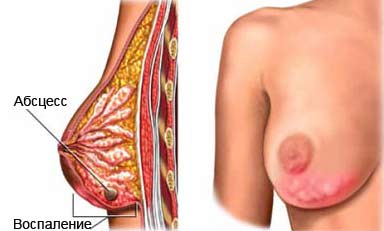
Delay in medical care or low immunity of a woman can cause serious complications:
- phlegmonous mastitis;
- gangrenous mastitis;
- sepsis.
After childbirth, women retain reduced immunity , so the body is not able to resist infection with all its might. This explains why medications sometimes don't work well.
Phlegmonous mastitis is a stage of inflammation in which pus moves from the mammary gland to the surrounding tissues and begins to destroy them, which leads to severe intoxication and anemia. Multiple organ failure and the risk of blood poisoning occur. Sometimes, with strong pressure in an attempt to massage, the purulent capsule ruptures and the contents spread inside the mammary gland into the retromammary space. Such cases are difficult to diagnose, so time is wasted and the patient may die due to bacterial shock and blood poisoning. Such cases are rare, but they do happen, so at the first signs of mastitis you need to check the condition of the mammary gland with a doctor.
The problem is that most women refuse to go to the hospital for a couple of days for treatment of serous uninfected mastitis, because they are afraid to leave the child alone. But this is a small problem compared to what could happen if an abscess develops and you have to spend a month in the hospital for treatment and never breastfeed your baby again.
You can start feeding one day after stopping antibiotics.
The gangrenous form is an extreme form of mastitis, in which the mammary gland is covered with blisters and traces of incipient necrosis are visible on the skin. It is not possible to save the breast in such cases. Doctors perform a mastectomy to save the patient's life. After the operation, a course of antibiotics and drugs to increase defenses, as well as anti-inflammatory drugs.
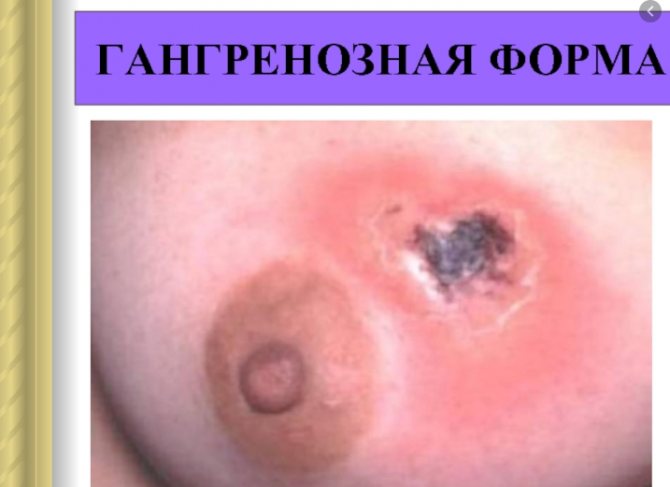
Special exercises for lactostasis
How to soften lumps in the breasts formed during lactostasis, in addition to massage procedures? To normalize the outflow of milk from narrowed ducts and stimulate blood circulation in the glands, there are a number of simple exercises:
- Your arms should be raised and bent at the elbows. Next, rest your forearms on the jambs or find another support located vertically. The chest makes springing movements towards the jamb and back.
- Repeat the same exercise, but not with two hands, but with one. With the fingers of the second hand, the opposite side of the affected breast, easily grab the lump of compaction and gently pull it down. When the lump slips out, lightly squeeze it again.
The main thing in performing such exercises is not to overdo it and not cause a feeling of discomfort in the chest muscles. If the load is distributed correctly, as a result, after a few days, the seals will completely dissolve, and the outflow of milk will improve.
Prevention of seals during hepatitis B
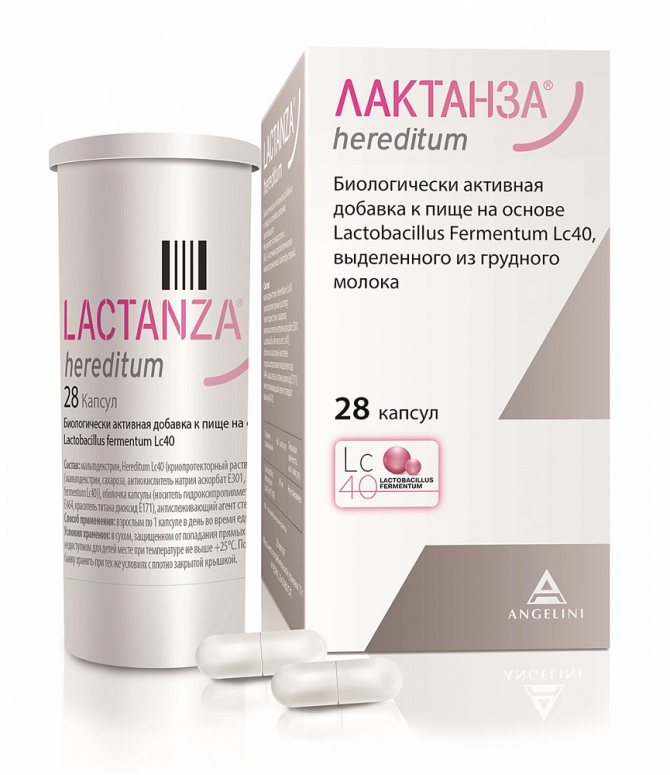
- In the first days, the baby should not be allowed to nurse for a long time. Problems arise for those mothers who had a caesarean section, and after it, while the mother was in the surgical department, the child was fed formula. Milk arrives gradually and the baby does not have enough of it in the first days, so complementary feeding and frequent breastfeeding are needed, but not for long.
- Position the baby correctly so that it is convenient for him to grasp the entire areola.
- Watch for the appearance of cracks - in any case, they form at the beginning of feeding. You can use ointments after feeding or squeeze out a little milk and distribute it over the nipple. It contains bactericidal substances that kill bacteria and prevent inflammation.
- Before feeding, wash your breasts with warm water.
Lumps in the breasts can signal the onset of lactostasis. Taking Lactanza allows you to control the level of inflammation and pathogenic bacteria in the mammary gland, an increase in which can lead to mastitis. This is a natural and safe remedy for a nursing woman and child based on beneficial lactobacilli Lc40 , isolated from breast milk and helping to normalize the microflora of the mammary glands. The product has been sold since 2014 and has already proven itself well in Spain, where more than 220 thousand packages have been purchased by nursing women.
To strengthen your immune system, you need to take vitamins for nursing. If lactostasis appears periodically, express some of the milk from both glands before feeding.
Hardware massage techniques
Massage of the breast during lactostasis is carried out not only manually. If a woman consults a doctor, the specialist may recommend a course of hardware therapy. Ultrasonic massage is considered the most popular physiotherapy for lactostasis. Ultrasound has a gentle effect on the mammary glands - it expands the ducts, eliminating stagnation, and has an unobtrusive warming effect. Thanks to a full course of sessions (at least 7-8), the woman completely gets rid of the problem of lactostasis, and already in the second procedure she feels significant progress in treatment.
For your information! Magnetic therapy is effective in combating congestion. It is carried out using special equipment, and the sessions do not cause pain or discomfort to the nursing mother. After the procedure, pain goes away, the level of inflammation decreases, the flow of blood and lymph in the affected tissues is activated, and swelling decreases.
At the initial stage of lactostasis, getting rid of the problem is much easier than when the process is advanced. Therefore, nursing mothers need to monitor the condition of the mammary glands, contacting a specialist if there are suspicious symptoms. To prevent pathology, massage, regular and correct application of the baby to the breast, adherence to the drinking regime and changing positions during feeding are effective. Mastering the rules of breast massaging is not difficult, but they will help every nursing mother improve lactation, improve milk flow and provide her baby with valuable nutrition.
When to see a doctor

Signs of infection and the onset of the inflammatory process:
- throbbing chest pain;
- the mammary gland is hot;
- body temperature begins to rise;
- pus appears from the nipple when pressed;
- general health worsened, weakness appeared;
- The lump has increased in size and massage does not help; because of the pain, it is impossible to touch the breast.
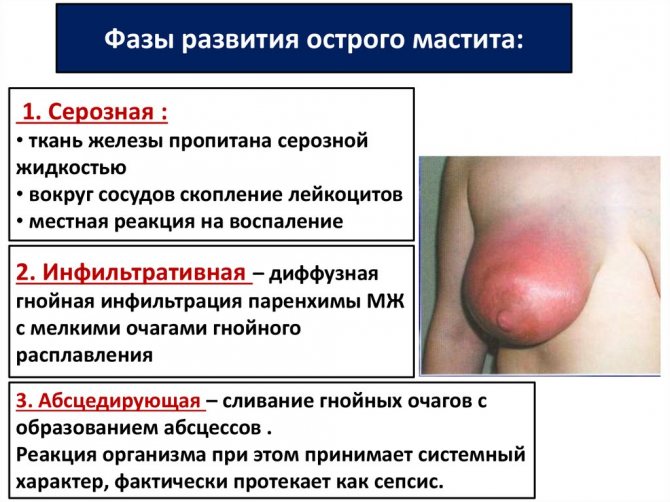
The most severe phase of mastitis is purulent . Body temperature can rise to 40 degrees, sometimes it drops on its own and rises again. In moments of decline, the woman sweats, then chills set in again. Due to intoxication, there is no appetite and vomiting begins. If you do not come to the hospital at this moment, an abscess - a cavity filled with pus.
To treat serous mastitis, high doses of antibiotics , and the child is transferred to artificial feeding during the mother's illness. During IVs and injections, medications are prescribed that accelerate milk flow, for example, oxytocin. Sometimes medications are given to reduce milk production. At this point, it is important to maintain lactation and at the same time remove inflammation, so you need to continue to pump regularly.
Valeria
General doctor
Ask a Question
If an abscess occurs, the woman is transferred to the surgical department, as a minor operation and opening of the purulent sac may be necessary. At the end of treatment, the milk is tested for sterility to ensure there is no infection. Only after this analysis can you start breastfeeding your baby.






